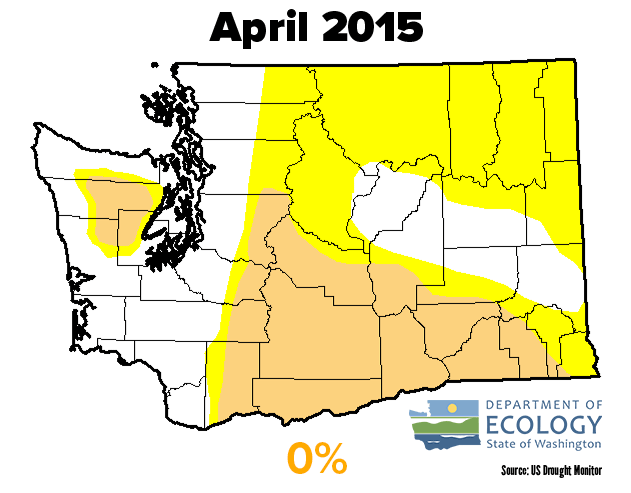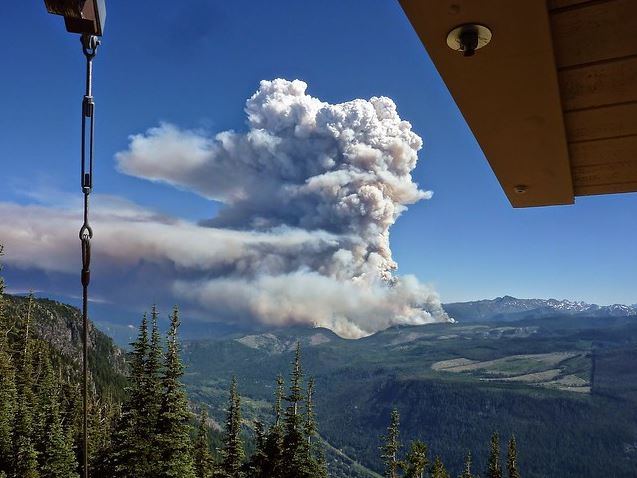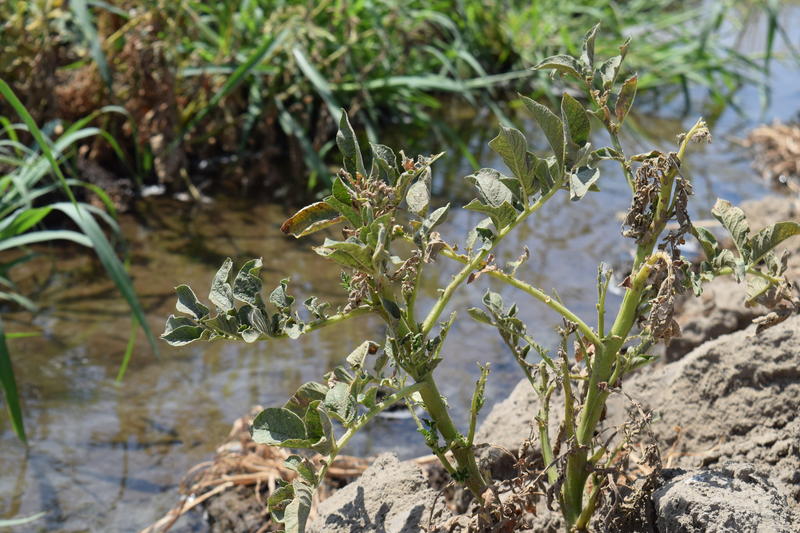Take a look at this map of Washington and you’ll see that nearly 99 percent of the state is in a severe drought. Streams are low, fish and farmers are stressed, and wildfires are raging statewide.
Amy Snover, the director of the Climate Impacts Group at the University of Washington, told KUOW in April 2015, this year’s weather is what global warming looks like and we’ll see a lot more of these (droughts), more frequently, as we go forward. Scientists warn that climate change could deliver “megadroughts” to the West, the likes of which haven’t been experienced in more than a thousand years.
Click on the above photo to view some of our 2015 wildfire photographs on flickr.
Catching fire
This past winter, warm temperatures meant that precipitation fell as rain instead of snow. Climate change modeling indicates these conditions are likely to become the norm in the decades ahead, meaning less snowpack and more frequent droughts.
As a result, forested areas are expected to dry out earlier, setting up wildfire conditions – just as we’ve seen this summer. Climate scientists predict the area burned by fire each year to double in the Northwest by the 2040s and quadruple by the 2080s because of climate change.
What will that look like? Look around – the Northwest Interagency Coordination Center has reported 29 large fires in Washington this year and about 1,000 total fires. Washington’s Department of Natural Resources has responded to 577 wildfires that have burned more than 73,000 acres this year.
Statewide, our weather temperatures are running 7 degrees above normal. As a result, river and stream temperatures are rising. The graph above illustrates the current high temperatures compared to the 7-year median. As of July 10, more than 80 percent of Washington’s rivers and streams are running below 10 percent of their normal flows. Water reaches a drought-stressed potato field for the first time in weeks.
Climate change and Washington's economy
To get a sense of how climate change may impact Washington’s economy, look at how our state’s agricultural industry is coping with 2015’s unprecedented drought. Weekly reports from the U.S. Department of Agriculture indicate that Washington’s agricultural producers are feeling the effects of the hot and dry conditions.
For example, only 32 percent of our state’s winter wheat crop, and 21 percent of the spring wheat crop is rated in “good” or “excellent” condition. Many non-irrigated crops and pastures are “stressed” or “struggling,” the USDA reports. Some farmers are abandoning lower-value vegetable and plantings so that the limited water available for irrigation can be used for higher-value crops, or to preserve perennial crops.
Silver linings?
Climate change isn’t hopeless. We can take steps to prepare and to improve our state’s resiliency to drought, fire and other climate impacts. Again, our response to this year’s drought shows some of the steps we can build on in the future.
Along with working to address the immediate impacts of the drought, Ecology is working with irrigation districts and water rights holders to improve water supplies and our transmission capabilities.
This year, the Legislature approved $16 million in funding to help ensure reliable public water supplies, augment water supplies for farmers and provide water to support stream flows for fish. A portion of the money will allow Ecology to provide grants to state and federal agencies, cities, counties, other local governments and some Indian tribes for projects such as developing alternative water resources, purchasing or leasing water or water rights, and building water transmission pipelines.
The conditions we’ve seen in 2015 may offer a glimpse of the new normal in the years ahead. The challenges we’re facing now are a dry run – a very dry run in most of the state – for the tools and techniques we will need to manage a warmer, drier Northwest.
Stay tuned for more Ecology blogs on climate change.





